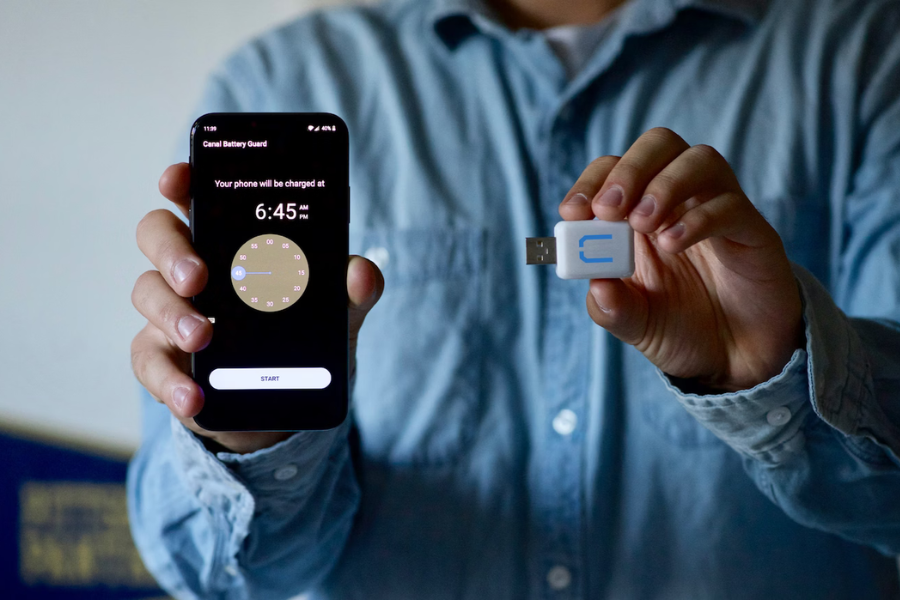Your iPhone battery health decreases with each charge cycle and degrades over time. One way to maximize battery health is to optimize it by keeping a check on it. If you are unsure of how to check your iPhone battery health after reset, don’t worry. We have got you.
First, ensure your device is set up and connected to Wi-Fi. Proceed through the initial setup screens until you reach the Apps & Data screen. Here, tap on “Don’t Transfer Apps & Data.” After completing the setup, go to “Settings,” select “Battery,” and then click on “Battery Health.” This will provide detailed information about your iPhone’s battery health, including its maximum capacity and peak performance capability.
03 Ways to Check iPhone Battery Health After Reset
1. Update To The Latest Software
To fix your dead phone, ensure you update your iPhone to the latest software regularly. This step is crucial for accurate battery health readings, as Apple frequently releases updates, including improvements to battery management.
2. Use The Built-In Tool
To check your battery health, navigate to “Settings,” tap on “Battery,” and select “Battery Health.” This tool provides insights into your battery’s maximum capacity and peak performance capability.
3. Third-Party Tools
How to Check Exact Charge Cycles?
Now that you know how to check iPhone battery health after reset, let’s move on to determining your iPhone’s charge cycles. It involves using third-party apps. Connect your iPhone to your computer, launch the app, and access the battery section. Look for the charge cycle count to understand how many complete charge and discharge cycles your battery has undergone.
6 Tips to Maximize Battery Health:
Avoid Extreme Temperatures
Exposure to extreme heat or cold can degrade battery performance. Keep your iPhone at a moderate temperature.
Optimize Settings
Adjust settings like screen brightness, background app refresh, and push notifications to conserve battery life.
Update Apps
Keep your apps updated, as developers often release optimizations to enhance energy efficiency.
Enable Low Power Mode
When facing common battery problems, activate Low Power Mode when your battery is running low to temporarily reduce power consumption. This feature can help extend the battery life of your device during critical moments.
Use Original Chargers
To maintain battery health, ensure you use Apple-certified chargers exclusively. This practice helps preserve your battery’s integrity and ensures optimal performance over time.
Avoid Constant Full Discharges
Frequent full discharges can strain your battery. Instead, aim for partial discharges and occasional full discharges.
Can you see battery health without setting up an iPhone?
You can check your iPhone’s battery health without completing the initial setup. Simply go to “Settings,” tap on “Battery,” and then select “Battery Health” to view the information.
Can you bring back the 100% battery health on iPhone?
While it’s challenging to restore the battery health to a perfect 100%, there are measures you can take to improve it. Regularly charging your iPhone and avoiding extreme temperatures can contribute to maintaining better battery health.
Should I replace my iPhone battery at 84%?
Replacing your iPhone battery at 84% is optional. Apple typically recommends battery replacement when the maximum capacity drops below 80%. However, if you experience significant performance issues or rapid battery drain, replacing the battery could improve overall device performance and longevity. Consider factors like usage patterns and personal convenience before making a decision.
Conclusion
For an iPhone Safety Guide, regularly monitor your iPhone’s battery health for optimal performance. Utilize built-in tools, update your iOS, and employ third-party apps for a comprehensive approach to checking your iPhone battery’s health after a reset. Follow proactive tips to maximize battery health and consider a battery replacement from a reputable repair store, such as The Mobile Market, if you notice issues like reduced charge capacity. We use high-quality replacement components to ensure long-lasting repairs.

